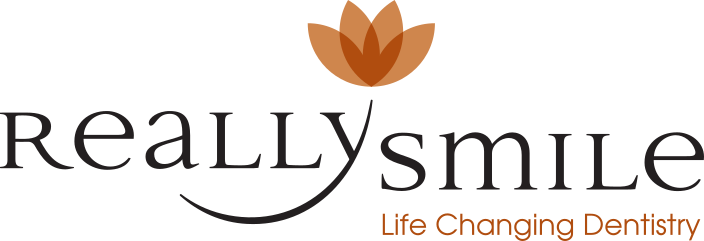Dental Cone Beam Scanner
A dental cone beam scanner uses specialized imaging technology, also known as Cone Beam Computed Tomography (CBCT) in dentistry, which generates three-dimensional (3D) images of dental structures, soft tissues, nerve paths, and bone in the craniofacial region. Unlike traditional dental X-rays, which produce two-dimensional images, CBCT utilizes a cone-shaped radiation beam to capture high-resolution, cross-sectional images.
This technology allows our dentist in Carmel, IN, to obtain detailed information about the anatomy of the teeth, jaws, and surrounding structures, aiding in treatment planning for procedures such as dental implant placement, orthodontic treatment, oral surgery, and the diagnosis of various dental conditions. CBCT scans are valuable for their ability to provide precise measurements, reduce radiation exposure compared to traditional CT scans, and improve visualization of complex dental structures.
Applications of Dental Cone Beam Scanners
Implant Dentistry
Implant dentistry has witnessed a paradigm shift with the advent of dental cone beam scanners. CBCT technology enables precise bone volume, density, and morphology assessment, which is essential for implant placement. By providing detailed 3D images of the jawbone and surrounding structures, CBCT scans empower dentists at Really Smile to plan implant surgeries with unparalleled accuracy, ensuring optimal implant placement and long-term success.
Orthodontics
In orthodontics, CBCT scans offer invaluable insights into the spatial relationships between teeth, roots, and surrounding bone. By providing detailed 3D images of dental anatomy, dental cone beam scanners facilitate comprehensive treatment planning for orthodontic interventions, such as assessing the presence and location of impacted teeth, evaluating root morphology, and planning orthognathic surgery.
Endodontics
CBCT technology has transformed the field of endodontics by enhancing the visualization of root canal anatomy. Dental cone beam scanners provide detailed 3D images of the tooth structure, enabling dentists to identify complex canal configurations, locate calcified canals, and accurately assess the extent of root canal infections. This comprehensive understanding of root morphology allows for more precise and successful endodontic procedures. Contact us today to learn more!
Oral and Maxillofacial Surgery
CBCT scans are crucial in treatment planning and surgical navigation in oral and maxillofacial surgery. By providing detailed 3D images of the facial skeleton, dental cone beam scanners assist surgeons in evaluating the spatial relationships between anatomical structures, identifying pathology, and simulating surgical procedures. This enables precise preoperative planning, reduces surgical risks, and enhances postoperative outcomes.
Temporomandibular Joint (TMJ) Disorders
CBCT technology offers valuable insights into diagnosing and managing temporomandibular joint disorders (TMDs). By providing detailed 3D images of the TMJ anatomy, dental cone beam scanners enable dentists to assess joint morphology, condylar position, and occlusal relationships. This comprehensive evaluation aids in diagnosing TMDs and facilitates the development of tailored treatment plans, including splint therapy, orthodontic intervention, or surgical management.
Airway Analysis and Sleep Apnea Management
CBCT scans are increasingly utilized for airway analysis and managing sleep-related breathing disorders, such as obstructive sleep apnea (OSA). By providing detailed 3D images of the upper airway, dental cone beam scanners assist dentists and sleep specialists in assessing airway dimensions, identifying anatomical obstructions, and planning appropriate treatment modalities, including oral appliance therapy or surgical interventions.
The Advantages of Dental Cone Beam Scanners Over Traditional Imaging
Three-Dimensional Visualization
One of the most significant advantages of dental cone beam scanners in Carmel, IN, is their ability to provide three-dimensional (3D) images of the oral and maxillofacial structures. Unlike traditional two-dimensional imaging techniques, such as X-rays and panoramic radiography, CBCT technology offers comprehensive 3D visualization, enabling dentists to evaluate dental anatomy from multiple angles with unprecedented clarity and detail.
Enhanced Diagnostic Accuracy
Dental cone beam scanners deliver superior diagnostic accuracy compared to traditional imaging modalities. By providing detailed 3D images of dental structures, soft tissues, and bone, CBCT technology enables dentists to detect pathology, assess bone density, and identify anatomical variations with greater precision. This enhanced diagnostic capability facilitates more accurate treatment planning and improves clinical decision-making.
Comprehensive Evaluation of Dental Anatomy
Traditional imaging techniques often offer limited views of dental anatomy, making it challenging to assess complex structures accurately. In contrast, dental cone beam scanners comprehensively evaluate the entire craniofacial region, including teeth, roots, alveolar bone, temporomandibular joints, and surrounding soft tissues. This comprehensive assessment enables dentists to identify abnormalities and plan treatment with a holistic understanding of the patient's oral health.
Reduced Radiation Exposure
While traditional X-rays and panoramic radiography are valuable diagnostic tools, they typically involve higher radiation doses than dental cone beam scanners. CBCT technology utilizes a cone-shaped beam of radiation focused on the area of interest, reducing radiation exposure to the patient. This minimization of radiation dose ensures patient safety without compromising diagnostic quality, making CBCT scans a preferred choice for imaging in dentistry.
Customized Field of View
Another advantage of dental cone beam scanners is the ability to customize the field of view (FOV) based on the specific diagnostic needs of each patient. Unlike traditional imaging modalities with fixed FOVs, CBCT technology allows dentists to adjust the scan parameters to focus on a particular region of interest while minimizing unnecessary radiation exposure. This customization enhances diagnostic accuracy and optimizes imaging efficiency.
Improved Treatment Planning
The detailed 3D images produced by dental cone beam scanners facilitate more precise treatment planning compared to traditional imaging techniques. Dentists can use CBCT scans to assess bone quality and quantity for implant placement, evaluate root canal morphology for endodontic procedures, and simulate orthodontic movements more accurately. This comprehensive preoperative assessment ensures optimal treatment outcomes and enhances patient satisfaction.
Unlock the power of advanced imaging technology with our dental cone beam scanner services. Visit Really Smile at 3003 East 98th St. Ste. 241, Carmel, IN 46280, or call (317) 841-9623 to schedule your CBCT scan and take the first step towards a brighter, healthier smile!
Visit Our Office
Carmel, IN
3003 East 98th St. Ste. 241, Carmel, IN 46280
Email: [email protected]
Request An AppointmentOffice Hours
- MON7:45 am - 5:00 pm
- TUE8:00 am - 3:00 pm
- WED7:00 am - 3:00 pm
- THU8:00 am - 3:00 pm
- FRIClosed
- SATClosed
- SUNClosed
